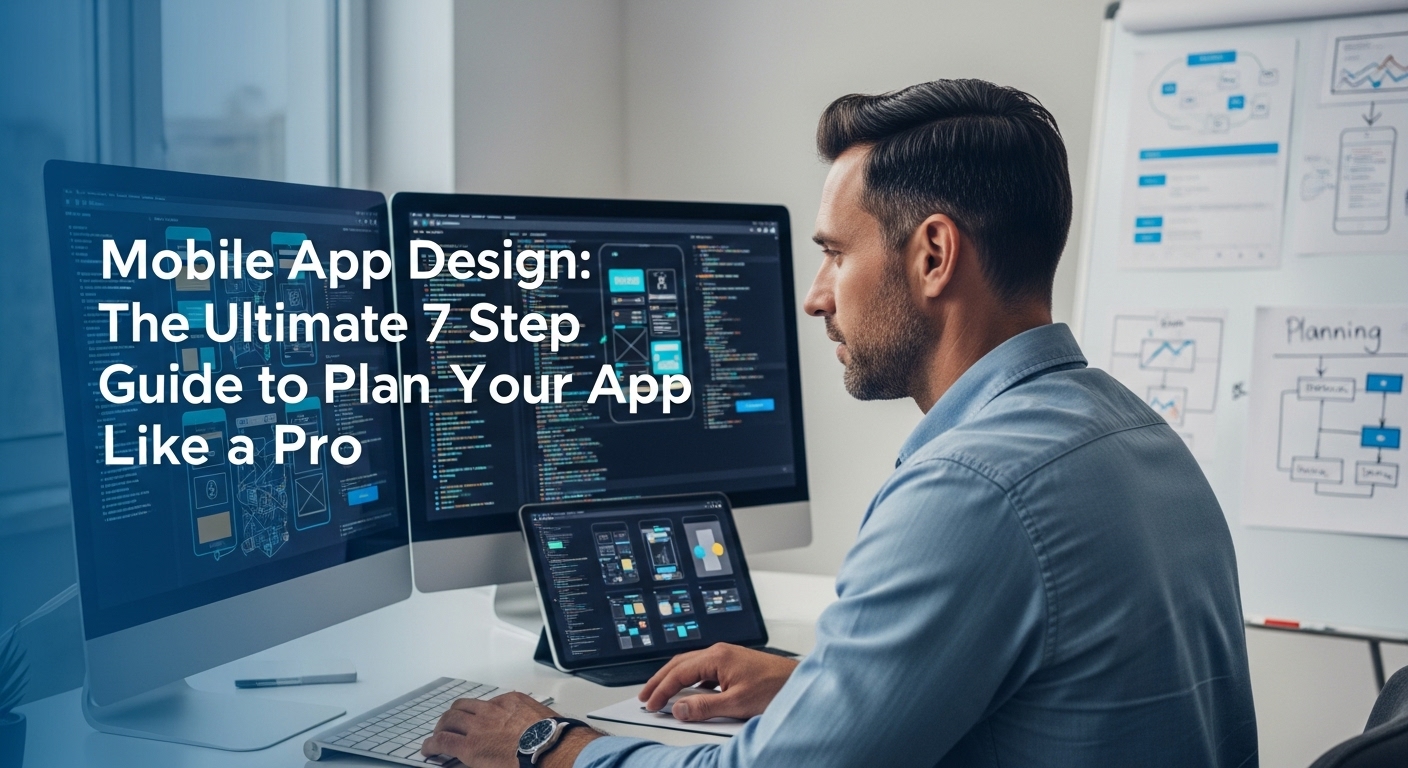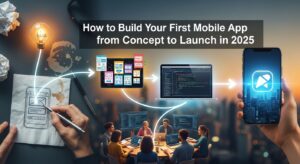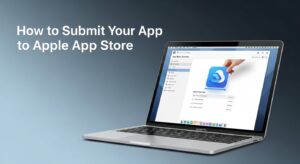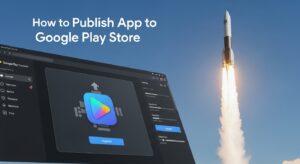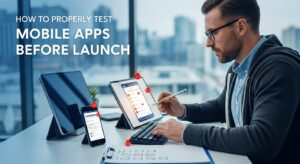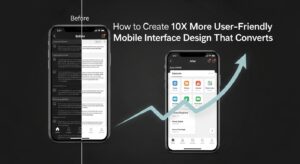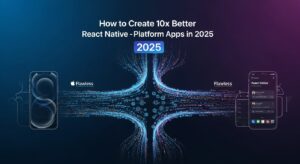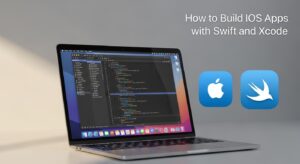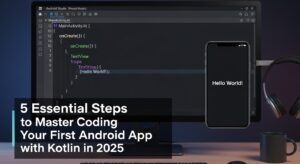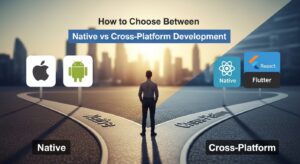Planning and executing successful mobile app design requires strategic thinking, careful preparation, and attention to detail. Whether you’re a startup founder, entrepreneur, or business owner, creating an app that resonates with users demands more than just a great idea.
The mobile app market generates over $935 billion annually, yet 90% of mobile apps fail within their first year. The difference between success and failure often lies in the planning and design phase. This comprehensive guide will walk you through seven essential steps to plan and design your mobile app effectively.
1. Define Your App’s Core Purpose and Target Audience
Identifying Your App’s Primary Function
Before diving into mobile app design, you must clearly define what problem your app solves. Successful apps address specific pain points or fulfill particular needs for their users.
Start by answering these fundamental questions:
- What primary problem does your app solve?
- Who experiences this problem most frequently?
- How does your app provide a unique solution?
- What makes your approach different from existing solutions?
Understanding Your Target Audience
Comprehensive audience research forms the foundation of effective mobile app planning. Your target audience influences every design decision, from color schemes to navigation patterns.
Demographic Factor | Research Method | Key Questions |
Age Range | Surveys, Analytics | What age groups face this problem most? |
Income Level | Market Research | What’s their purchasing power? |
Tech Proficiency | User Interviews | How comfortable are they with technology? |
Geographic Location | Location Data | Where are your users located? |
Lifestyle Patterns | Behavioral Analysis | When and how do they use mobile apps? |
Create detailed user personas that include demographics, behaviors, goals, and frustrations. These personas will guide your mobile app design decisions throughout the development process.
2. Conduct Comprehensive Market Research and Competitive Analysis
Analyzing Market Opportunities
Thorough market research reveals opportunities and potential challenges in your chosen niche. Understanding market size, growth trends, and user preferences helps validate your app concept.
Research these key areas:
- Market size and projected growth
- Current user spending patterns
- Popular app categories and features
- Emerging trends and technologies
- Regulatory considerations and compliance requirements
Competitive Landscape Assessment
Studying your competition provides valuable insights for your app development planning. Analyze both direct and indirect competitors to identify gaps in the market.
For each competitor, document:
- Core features and functionality
- User interface design patterns
- Pricing strategies
- User reviews and feedback
- Download numbers and market position
- Strengths and weaknesses
This analysis helps you position your app uniquely and avoid common pitfalls that competitors have encountered.
3. Create Detailed User Stories and Feature Requirements
Developing Comprehensive User Stories
User stories translate your app’s purpose into specific scenarios that describe how users will interact with your application. Well-crafted user stories drive feature development and inform mobile app design decisions.
Structure user stories using this format: “As a [type of user], I want [specific functionality] so that [desired outcome].”
Example user stories for a fitness app:
- As a beginner exerciser, I want guided workout routines so that I can exercise safely without prior knowledge
- As a busy professional, I want quick 15-minute workouts so that I can maintain fitness despite time constraints
- As a fitness enthusiast, I want progress tracking so that I can monitor my improvement over time
Prioritizing Features Using the MoSCoW Method
Effective mobile app planning requires careful feature prioritization. The MoSCoW method helps categorize features based on importance:
- Must Have: Essential features for core functionality
- Should Have: Important features that enhance user experience
- Could Have: Nice-to-have features for future consideration
- Won’t Have: Features excluded from the current scope
This prioritization ensures you focus resources on features that deliver maximum value to users while keeping development costs manageable.
4. Design Your App’s Information Architecture and User Flow
Structuring Information Architecture
Information architecture determines how content and features are organized within your app. Clear architecture supports intuitive navigation and positive user experiences.
Key components of effective information architecture include:
- Content hierarchy and categorization
- Navigation patterns and menu structures
- Search functionality and filtering options
- Content labeling and terminology
- Cross-linking between related sections
Mapping User Flows
User flows visualize the path users take to complete specific tasks within your app. These flows identify potential friction points and optimization opportunities in your mobile app design.
Create user flows for primary user actions such as:
- Onboarding new users
- Core feature usage
- Purchase processes
- Account management
- Support and help functions
Document decision points, alternative paths, and error scenarios to ensure comprehensive coverage of user interactions.
5. Develop Wireframes and Prototypes
Creating Low-Fidelity Wireframes
Wireframes provide the structural foundation for your app’s interface design. Start with low-fidelity wireframes that focus on layout and functionality rather than visual design elements.
Key wireframing principles for mobile app design:
- Maintain consistency across screens
- Follow platform-specific design guidelines
- Prioritize content hierarchy
- Ensure touch-friendly interface elements
- Design for various screen sizes and orientations
Popular wireframing tools include Figma, Sketch, Adobe XD, and Balsamiq. Choose tools that facilitate collaboration with your development team and stakeholders.
Building Interactive Prototypes
Interactive prototypes allow you to test user flows and gather feedback before development begins. Prototypes range from simple clickable wireframes to sophisticated interactive models.
Benefits of prototyping in app development planning:
- Validates design concepts with real users
- Identifies usability issues early
- Reduces development costs and time
- Facilitates stakeholder communication
- Guides developer implementation
Create prototypes for critical user journeys and test them with representative users to gather actionable feedback.
6. Design the User Interface and Visual Elements
Establishing Visual Design Principles
Strong visual design principles create cohesive, professional-looking apps that align with user expectations. Your mobile app design should reflect your brand identity while prioritizing usability.
Core visual design elements include:
- Color palette that supports readability and accessibility
- Typography hierarchy that guides user attention
- Iconography that communicates meaning clearly
- Spacing and layout that creates visual balance
- Interactive elements that provide clear feedback
Following Platform Design Guidelines
Both iOS and Android have specific design guidelines that ensure consistency with platform conventions. Following these guidelines improves user acceptance and app store approval chances.
Platform | Design System | Key Principles |
iOS | Human Interface Guidelines | Clarity, Deference, Depth |
Android | Material Design | Material metaphor, Bold graphics, Intentional motion |
Adapt your mobile app design to each platform while maintaining your brand identity and core user experience principles.
Creating Responsive Designs
Modern mobile app planning must account for diverse device sizes and capabilities. Design flexible layouts that work effectively across different screen dimensions and resolutions.
Consider these responsive design factors:
- Scalable typography and interface elements
- Flexible grid systems and layout structures
- Touch target sizes for various device types
- Content prioritization for smaller screens
- Performance optimization for different hardware capabilities
7. Plan for Testing, Launch, and Post-Launch Optimization
Comprehensive Testing Strategy
Thorough testing ensures your app functions correctly and provides positive user experiences. Develop a testing strategy that covers functionality, usability, performance, and security aspects.
Testing phases for mobile app design include:
- Alpha Testing: Internal testing to identify major issues
- Beta Testing: Limited external testing with real users
- Usability Testing: Focused evaluation of user experience
- Performance Testing: Assessment of speed and resource usage
- Security Testing: Validation of data protection measures
Document testing procedures and criteria to ensure consistent evaluation across different aspects of your app.
Launch Preparation and Marketing
Successful app launches require careful preparation and strategic marketing efforts. Your app development planning should include pre-launch, launch, and post-launch marketing activities.
Pre-launch preparation includes:
- App store optimization (ASO) for better discoverability
- Creating compelling app store listings with screenshots and descriptions
- Building anticipation through social media and email marketing
- Preparing customer support resources and documentation
- Establishing analytics and monitoring systems
Post-Launch Optimization and Iteration
The launch marks the beginning of ongoing optimization efforts. Successful mobile app design requires continuous improvement based on user feedback and behavior data.
Post-launch activities include:
- Monitoring user engagement and retention metrics
- Gathering and analyzing user feedback
- Identifying and fixing bugs and performance issues
- Planning and implementing feature updates
- Optimizing conversion rates and user flows
Regular updates keep your app relevant and competitive while addressing evolving user needs and preferences.
Essential Tools and Resources for Mobile App Design
Design and Prototyping Tools
Professional mobile app design requires appropriate tools that support collaboration and efficiency. Here are recommended tools for different aspects of the design process:
Design Tools:
- Figma – Collaborative interface design
- Sketch – Vector-based design for Mac
- Adobe XD – Complete design and prototyping solution
- InVision – Prototyping and collaboration platform
User Research Tools:
- Hotjar – User behavior analytics and feedback
- UsabilityHub – Remote usability testing
- UserTesting – Comprehensive user research platform
Development and Project Management Resources
Effective mobile app planning benefits from robust project management and development resources:
- Trello – Visual project management
- Asana – Team collaboration and task management
- GitHub – Version control and code collaboration
- Firebase – Backend services and analytics
Measuring Success: Key Metrics and KPIs
Essential App Performance Metrics
Tracking the right metrics helps evaluate your mobile app design effectiveness and identify optimization opportunities.
Metric Category | Key Performance Indicators | Measurement Tools |
User Acquisition | Downloads, Install rate, Cost per install | App Store Analytics, Google Analytics |
User Engagement | Session duration, Screen views, Feature usage | Firebase, Mixpanel, Amplitude |
User Retention | Daily/Monthly active users, Churn rate | Retention analysis tools |
Conversion | In-app purchases, Goal completions | Revenue tracking platforms |
Performance | Load times, Crash rates, App ratings | Performance monitoring tools |
Setting Realistic Goals and Benchmarks
Establish measurable goals that align with your business objectives and industry benchmarks. Your app development planning should include both short-term and long-term success metrics.
Consider these benchmark categories:
- Industry-specific performance standards
- Competitor performance data
- User satisfaction scores
- Revenue and monetization targets
- Market share and growth objectives
Regular monitoring and analysis of these metrics inform ongoing optimization efforts and strategic decisions.
Common Pitfalls to Avoid in Mobile App Design
Over-Complicating the User Experience
Many apps fail because they try to do too much or make simple tasks unnecessarily complex. Effective mobile app design prioritizes simplicity and user-friendly interactions.
Avoid these common UX mistakes:
- Cluttered interfaces with too many options
- Complex navigation systems
- Lengthy onboarding processes
- Inconsistent design patterns
- Poor touch target sizing
Neglecting Platform-Specific Considerations
Each mobile platform has unique characteristics and user expectations. Successful mobile app planning accounts for platform differences while maintaining consistent core functionality.
Platform-specific considerations include:
- Hardware capabilities and limitations
- Operating system features and integrations
- App store requirements and guidelines
- User behavior patterns and preferences
- Performance optimization techniques
Insufficient Testing and Quality Assurance
Rushing to launch without adequate testing often results in poor user experiences and negative reviews. Comprehensive testing should be integral to your mobile app design process.
Ensure thorough testing of:
- Core functionality across different devices
- User interface responsiveness and performance
- Data security and privacy protection
- Integration with third-party services
- Error handling and recovery processes
Future-Proofing Your Mobile App Design
Emerging Technologies and Trends
Staying current with mobile technology trends helps ensure your app remains competitive and relevant. Consider how emerging technologies might enhance your mobile app design:
- Artificial intelligence and machine learning integration
- Augmented reality (AR) and virtual reality (VR) capabilities
- Internet of Things (IoT) connectivity
- 5G network optimization
- Voice interface and conversational UI
Scalability and Growth Planning
Design your app architecture to accommodate future growth and feature expansion. Scalable mobile app planning reduces the need for major redesigns as your user base grows.
Scalability considerations include:
- Flexible backend infrastructure
- Modular feature architecture
- Performance optimization for increased usage
- International expansion capabilities
- Multi-platform deployment strategies
Conclusion
Successful mobile app design requires careful planning, thorough research, and attention to user needs. By following these seven comprehensive steps, you’ll create a solid foundation for your app’s success.
Remember that great apps evolve continuously based on user feedback and changing market conditions. Stay committed to ongoing improvement and optimization to maintain competitive advantage in the dynamic mobile app marketplace.
The key to exceptional mobile app design lies in balancing user needs with business objectives while maintaining technical excellence and market awareness. Start with thorough planning, execute with attention to detail, and iterate based on real-world usage data.
Your app’s success depends on the quality of planning and design decisions made during these early stages. Invest the necessary time and resources in this crucial phase to maximize your chances of creating a mobile app that users love and actively engage with over time.

